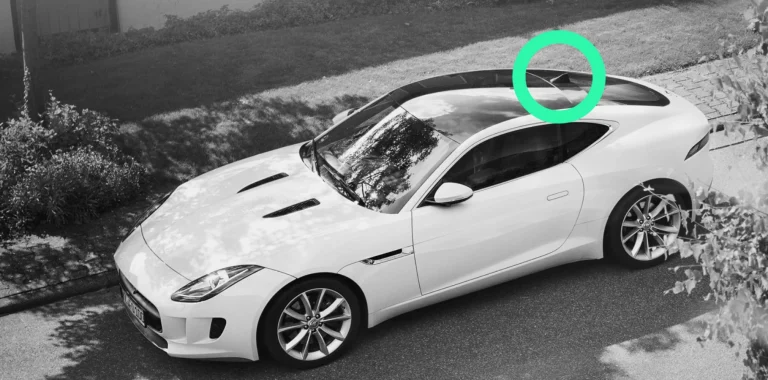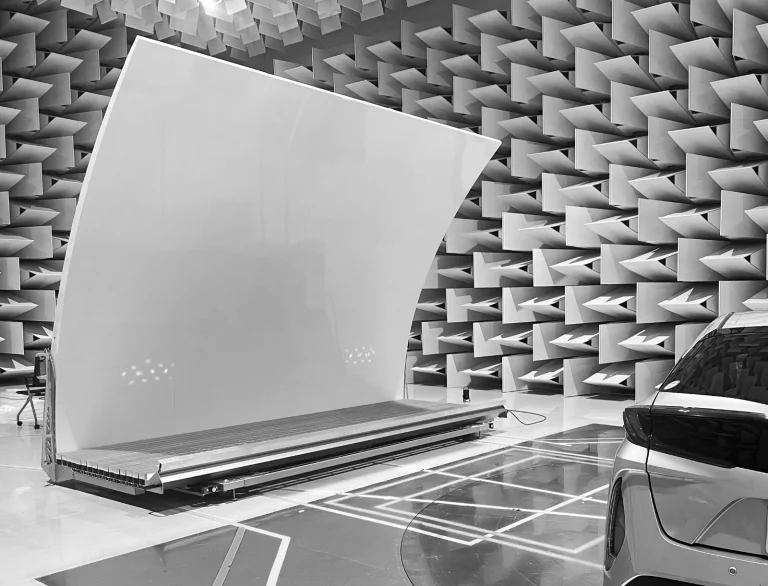The importance of a robust test philosophy in the development of wireless communication systems, particularly those used in vehicles, is essential. The complexity of these systems, which involve digital and analog subsystems along with extensive software, requires thorough testing to ensure customer satisfaction and the overall quality of the communication system in cars.
To measure the communication system of a vehicle you need to simulate the environment in which the vehicle will be used. The communication to and from a vehicle is typically between a car and the surroundings, i.e. other cars, base stations, road-side systems, etc. what we call vehicle-to-everything communication or V2X-communication. Since the antennas used for the communication are far apart and the communication is wireless, the communication is said to be in Over-the-Air (OTA) far-field conditions.
For final system verification or measurements during the development phase, we want to create far-field conditions. This is because obtaining accurate measurement results requires the antenna’s far-field conditions to be met. Therefore, the antenna under test (AUT) must be in the far field of the probe antenna, i.e. the antenna used for the measurement. This can be done in different ways. Perhaps the most obvious way is to use a large enough shielded room so that the AUT and the probe antenna is guaranteed to be at far-field distance for all frequencies of interest. The main disadvantage with this method is that the chamber must be very large, and therefore will be very expensive.
A commonly used alternative method is to measure in the near-field at a short distance from the AUT. For this, we need to sample the field in many points on a sphere surrounding the AUT and then use complicated mathematical transformations to get the far-field performance of the AUT. The main advantage with this so-called NF-FF (near-field to far-field) method is that the chamber can be made smaller. However, the disadvantages are that we need a mechanically precise positioning device for the probe antenna, and we need to sample in many points on the surrounding sphere, higher frequencies require more points. This in combination with the necessary mathematical transformations will result in long measurement times. Also, the method is not suitable for direct throughput measurements.
Besides the mentioned methods for creating far-field conditions for the AUT, there are other methods that do not require large distances and thus can be fitted into smaller chambers.
One such method is to use a two-dimensional array of antennas that are individually amplitude and phase controlled. With such a configuration it is possible to create a plane wave (far-field) at a short distance in front of the 2D array. However, since controllable attenuators and phase shifters are required for all antenna elements in the array it is a complex construction, and a complicated calibration procedure is required. Another limiting factor is the rather limited frequency bandwidth.
Instead of using a 2D array of antennas, a single antenna illuminating a shaped reflector can be used. This is a much more flexible solution which often is used in high-precision antenna test ranges, so-called compact antenna test ranges (CATR). In such a setup, the feed antenna is normally placed at floor level in a fully anechoic chamber and the double curved reflector is elevated to avoid the feed antenna blocking the field. The test zone where we will have the desired plane wave will therefore be at a certain height over the floor in the chamber, and thus the AUT must be placed on a tower.
RanLOS test system is basically built on the same principle but instead of using a complicated double curved reflector, we use a single curved cylindrical reflector. The advantage is twofold. First, the reflector is cheaper to manufacture due to its simpler shape, and second, both the reflector and feed array can be placed on floor level in the chamber. The latter is an important advantage since the whole test system can be placed in a semi-anechoic chamber, e.g., an EMC chamber. Another important aspect is that the feed array and the reflector can be made as one unit, which makes it possible to make it mobile so that the test system easily can be rolled in and out of the chamber. Thus, allowing for the chamber to be used for dual purposes, e.g., EMC and antenna testing. The feed array in the RanLOS test system is a dual polarized passive antenna and as such can be used either as a transmitting or receiving antenna, allowing both antenna performance and throughput measurements.
So, although the RanLOS test technology is less complex, it can deliver the same high measurement quality as expensive and advanced test facilities.
Additionally, with RanLOS accessibility users can easily perform daily measurements throughout the development process, saving costs and speeding up time to market.





